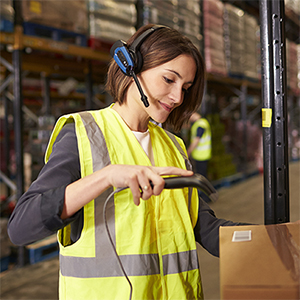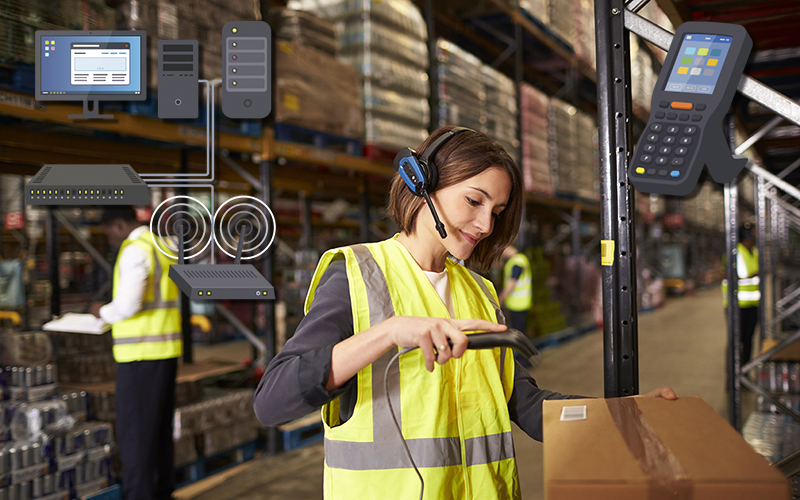Because lift trucks were not historically known for their brains, mobile computer terminals have been used to bring warehouse intelligence to the operator.
Lately, as lift trucks become more connected and computerized, they are changing the patterns of how and where data moves through a facility, its devices and its equipment.
There is massive potential for operational improvements from connecting telematics, warehouse execution, labor management and more.
But, if you imagine each thread of communication as a string, many operations look more like spaghetti than a neatly woven braid.
“There seems to be a lot of technology all around in the warehouse, but not a lot of it is integrated,” says Mike Maris senior director of transportation and logistics at Zebra Technologies. “The key is to establish one central point of conversation or data transmission.”
It’s important to know if a given forklift is running hot, needs oil or has any leaks, but today that truck is trying to communicate through fixed or wireless connection to a central maintenance resource in the warehouse.
The natural progression, Maris says, is to have the lift truck communicate with the mobile computer mounted on it, to work together as one point of communication between operator, manager and all related systems.
“People hear the term Internet of Things and either have a lot of preconceived notions about what that means or no clue whatsoever. I see IoT coming together at the mobile computer, so the lift truck itself can communicate to broader systems, instead of a dedicated portal from the lift truck.”
Rugged, touchscreen computers are not just a way to receive instructions, it’s a window into virtually countless potential data streams. One screen can direct an operator for tasks like let-down, putaway, or picking, and also present telematics and maintenance information that’s relevant to the operator or to a technician.
Push-to-talk or VoIP capabilities can support communication within or between facilities. Real-time maps might help an operator navigate more efficiently and could display stop signs or other traffic warnings. A central hub could prove most useful to a manager trying to make sense of all the information.
Maris says:
“The question is how to take all these analytics—the telematics on the lift truck, the warehouse management system (WMS), the yard management system—and boil it all down to really understand in a small packet what you need to know and what you don’t.”
“Analytics engines will be a big part of what you see in a warehouse, across forklifts and even pallet jacks.” Maris notes ongoing efforts to work with software and WMS players to make use of mobile equipment integrated with the truck.
“If the WMS knows three or four forklifts are already in an aisle, it could reorder work priority. It knows the aisle will get jammed if it adds two more forklifts, so it will send them to other tasks. That is where we will see that next 10% to 15% productivity improvement. Software folks realize that and are working hard to get to that point, and we’re trying to get them the hardware to do that.”
Related White Papers
The Hidden Costs Of Using Consumer-Grade Mobile Technology
Companies are increasingly turning to mobile technology to help drive the next level of productivity, efficiency and service in their organizations. Download Now!
Addressing Productivity Barriers in the Warehouse
Most warehouses are already utilizing mobile devices in the warehouse aisles to improve productivity and accuracy from picking to shipping. With warehouses already reaping the maximum benefits out of their mobility solutions, what can warehouse managers do to obtain the needed increase in productivity? Download Now!
Building the Smarter Warehouse: Warehousing 2020
Redefining Supply Chain Automation in the Age of Digital Technology: North America Report - The online survey asked IT and operations personnel in the manufacturing, retail, transportation and wholesale market segments to share their insights and business plans over the next five years, in light of a rapidly changing industry. Download Now!
About the Author
Follow Robotics 24/7 on Linkedin
About the Author
Follow Robotics 24/7 on Linkedin
About the Author
Follow Robotics 24/7 on Linkedin
Article topics
Email Sign Up























